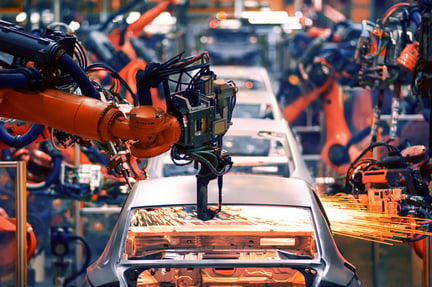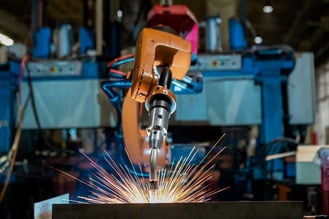Robotic process automation (RPA) can help drive business transformation forward, but only if it is implemented correctly.
 Many manufacturing industries have had to reconsider their infrastructure, processes and workforces as a result of the COVID-19 pandemic. With additional pressures to meet increased customer demand while restricted by social distancing measures, many organizations are turning to technology for a solution.
Many manufacturing industries have had to reconsider their infrastructure, processes and workforces as a result of the COVID-19 pandemic. With additional pressures to meet increased customer demand while restricted by social distancing measures, many organizations are turning to technology for a solution.
According to recent research, almost half of existing jobs could be automated within the next generation due to technology integration and the acceleration of automation.
Robotic process automation (RPA) is an information technology (IT) solution that brings humans and software together in order to find ways to streamline mundane processes, making it easier for humans to complete tasks with more precision. This collaboration helps the human by eliminating as much repetition as possible while also improving speed and efficiency.
RPA is not a new concept – but its application has evolved over time, from the ability to automate processes to handling business and computing decisions, which has coincided with advancements in other technologies, such as artificial intelligence (AI) and machine learning (ML). According to Gartner, the worldwide RPA market is expected to reach nearly $2 billion by the end of 2021, providing a digital solution to help businesses contribute to meeting their strategic objectives and stay competitive, driving business transformation.
Successful RPA deployment
As with any new technologies, it is first necessary to have some clearly defined processes in place. In order to successfully deploy RPA, organizations first need to consider the business value or pain points that they want to gain or solve. Once the business case of implementing automation technologies has been fully evaluated, it is then possible to gradually deploy solutions. The automation solution needs to fit and work alongside existing processes, while ensuring it is flexible and scalable to meet any changes and growth internally.
The human workforce needs to be part of the deployment and it is important that they understand the technology, and its benefits – minimizing the need for them to conduct repetitive tasks and focus their time and attention on more complex needs.
When technology can completely eradicate these arduous tasks, individuals are likely to respond well to the change, but they do need to be educated, trained and confident in the solution. They need to understand how the technology works and how they work together, as well as the benefits that collaboration will bring.

Big Data driving RPA
The concept of Big Data is driving automation, and particularly RPA, acting as a data-driven process. Vast amounts of data is generated daily, collecting information about performance, accuracy and repeatability, but the value of this information can often be lost if it is left to humans to process. The insights provided by the collaboration between RPA and Big Data can be used to recognize any risks within business processes and help companies resolve and streamline these points within their operations.
Covid-19 has acted as a catalyst by accelerating the uptake in automation, especially within the manufacturing and logistics industry. With less staff able to be present within the same environment due to the need for social distancing, organizations faced significant challenges to meet. This is where RPA can play a vital role in helping keep up with the pace of change and to drive efficiency across the business. Such technology is critical to business response and continuity by amplifying automated support systems in order to strengthen a resilient human and machine workforce.
Conclusion
More businesses are inquiring about automation and wanting to find out more about existing technologies that can help make processes more efficient, By ensuring technologies such as RPA fit into existing business operations and deploying it successfully, RPA can enable businesses to benefit from improved efficiencies and productivity, in turn, driving business transformation now and into the future.
This article originally appeared in Control Engineering.









